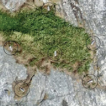In this collection
|
Papers published: 4 Papers in press: 1 Unique views: 8130 Total views: 12754 |
Landscapes are composed of heterogeneous patches containing different habitat and land cover types that should be identified in order to assess structural and functional ecosystem properties. Most ecosystem services assessments use proxy variables derived from land cover or habitats classes as input. However, land use and habitats usually show temporal dynamics that reflect differences in the functions and services provided within and between years. In this regard, the assessment of functional attributes, such as vegetation phenology, can complement and improve habitat and land cover classifications based only on structural features by including vital ecosystem functioning properties. Similarly, it is now possible to remotely estimate realised use of ecosystems (e.g. using smartphone data or social media). As a matter of fact, our ability to monitor ecosystem functions, potential services and realised use by means of remote sensing has extensively improved in the last decades in relation to new sensors, higher data availability, new algorithms, new cloud computing facilities, etc.
This Collection will comprise a selection of research papers exploring new ways in which remote sensing can be used to assess and link ecosystem functions with services. We welcome contributions related to any of the following topics:
- Assimilation of remote sensing datasets into process-based models used to quantify ecosystem functioning, pressures and services provision.
- Mapping habitat functional types and services.Cloud and desktop-based remote sensing tools to assess ecosystem condition, functions and services.
- Case studies using remote sensing techniques and quantification of ecosystem services to improve the management of specific areas, for example through integration of Research Infrastructures with expert and stakeholder networks.
- Pioneer methods and tools that use earth observation technologies to enable ecosystem accounting, including measuring ecosystem extent and condition.
Keywords: ecosystem service, remote sensing, ecosystem accounting, ecosystem functions, cloud-based remote sensing.




